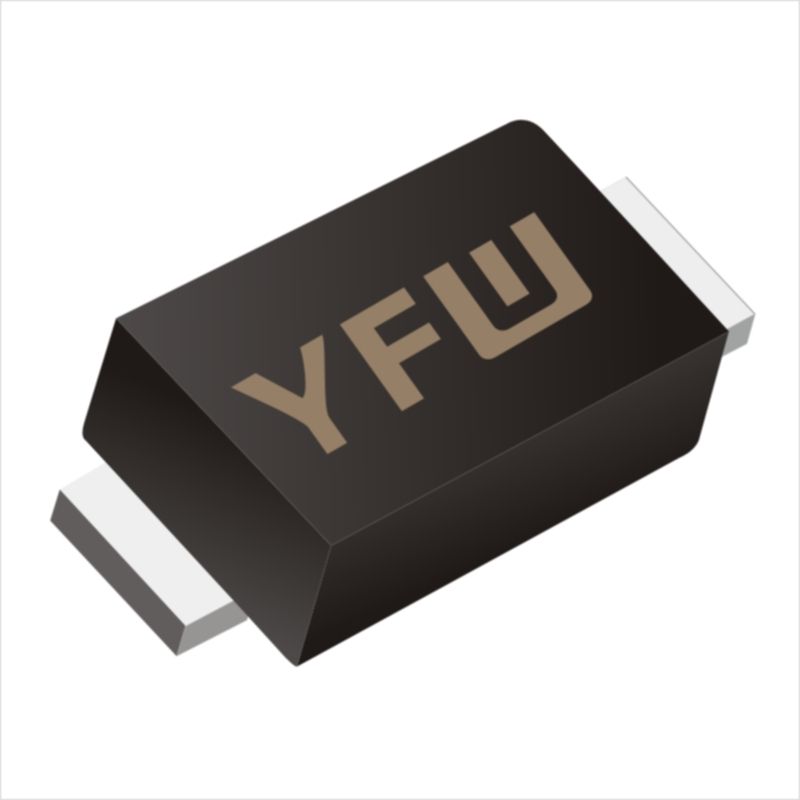A diode operates on the principle of PN junction rectification, allowing current to flow in one direction (forward bias) while blocking it in the opposite direction (reverse bias). When the negative terminal of a power supply is connected to the diode's cathode, the diode is placed in reverse bias if the voltage polarity is correct. In this state, the diode remains non-conductive, acting as an open circuit and preventing any reverse current from flowing back into the power source or sensitive components. However, if the polarity is reversed (e.g., due to a wiring error), the diode becomes forward-biased, enabling current flow and redirecting the erroneous voltage away from the circuit.
For instance, in a battery-powered system, connecting the battery's negative terminal to the diode's cathode ensures that if the battery is inserted backward, the diode blocks the reverse current, preventing damage to the circuit's components, such as integrated circuits or sensors. This mechanism is particularly vital in systems where incorrect polarity could lead to irreversible damage or safety hazards.
Power Supply Protection
In DC power systems, diodes are commonly placed in series with the input to prevent reverse voltage from damaging the load. YFW's SB280 Schottky diode (2A, 80V) is designed for this purpose, offering low reverse leakage and high surge current capability to handle transient voltage spikes .
Automotive Electronics
In car batteries or charging systems, reverse polarity protection is essential. YFW's MBR30100PTS Schottky diode (30A, 100V) is widely used in automotive applications, providing fast switching and low forward voltage drop to ensure efficient protection against reverse currents .
Industrial Equipment
Industrial control systems often require robust protection against voltage fluctuations. YFW's TVS transient voltage suppressors and ESD protection devices complement diode-based reverse polarity circuits, offering comprehensive surge protection for sensitive industrial components .
YFW's diode portfolio excels in reverse polarity protection due to the following features:
Low Forward Voltage Drop: YFW's Schottky diodes, such as the BAS40WT (0.2A, 40V), minimize power loss during normal operation, ensuring high efficiency .
Fast Reverse Recovery Time: This characteristic is critical in high-frequency applications, preventing energy loss and thermal stress.
High Temperature Resistance: YFW's diodes are engineered to operate reliably in extreme temperatures, making them suitable for harsh environments like automotive and industrial settings .
Compact : YFW offers a range of surface-mount packages (e.g., SOD-123, SMB), enabling space-saving designs without compromising performance .
While diodes provide effective reverse polarity protection, designers must consider:
Forward Voltage Drop: This affects the circuit's operating voltage. YFW's Schottky diodes mitigate this issue with voltages as low as 0.68V .
Current Handling Capacity: Selecting a diode with adequate current rating is crucial to avoid thermal failure.
Reverse Breakdown Voltage: Ensure the diode's breakdown voltage exceeds the maximum reverse voltage expected in the system.
Connecting the negative terminal to the diode's cathode is a fundamental technique for protecting circuits from reverse polarity and unwanted current flow. YFW's advanced diode solutions, including Schottky diodes, TVS suppressors, and MOSFETs, offer reliable, efficient, and cost-effective protection across diverse applications. By integrating YFW's diodes into circuit designs, engineers can enhance system reliability, extend component lifespan, and meet the demands of modern electronic systems.
For more information on YFW's diode products and technical specifications, visit www.yfwdiode.com. 